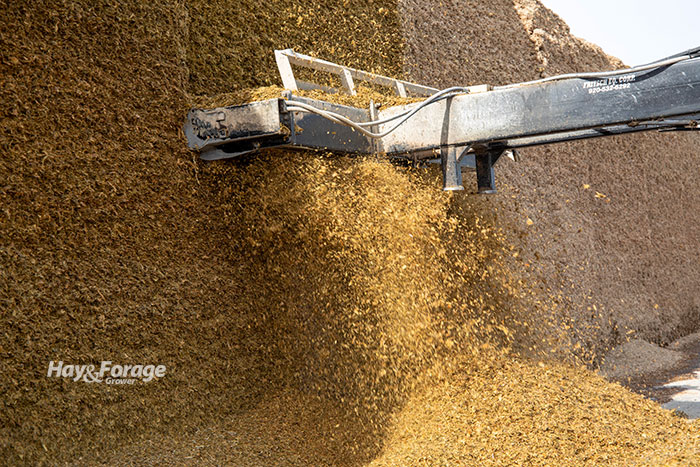VFA testing offers a post-harvest report card |
| By Mike Rankin, Managing Editor |
|
|
|
Most silage and haylage crops from the past growing season now sit packed, covered, and/or wrapped. Perhaps you think it will make good feed because everything was done “right,” or maybe you’ve got concerns. In conjunction with a forage quality test, one of the best ways to evaluate silage and haylage is to go the extra mile and request a fermentation profile of your silage, haylage, or baleage. “Including a fermentation profile on ensiled forages can be helpful in navigating potential bottlenecks to dry matter intake and animal health issues,” notes Virginia Ishler, an extension dairy specialist with Penn State University. “Using pH alone as a barometer of forage quality does not necessarily give an accurate picture. The fermentation profile ultimately reflects the quality of the feed and is the key to establishing a good foundation,” she adds. Although a forage sample might yield excellent forage quality results, suboptimum levels of volatile fatty acids (VFAs) can limit intake, cause digestive issues, or induce more severe health issues. The important VFAs that make up the fermentation profile are lactic, acetic, propionic, and butyric acids. Ishler notes that lactic is the strongest acid and the most desirable during fermentation. Ideally, it should comprise between 65% to 70% of the total acid produced, or 3% to 8% on a dry matter basis. Acetic acid generally ranges from 1% to 4% while propionic acid is often less than 0.5%. For corn silage, Ishler explains that the use of a heterofermentative inoculant such as Lactobacillus buchneri produces a mix of lactic and acetic acid. When used, acetic acid levels may be higher to inhibit yeast and molds that cause aerobic deterioration during feedout. Also, lactic acid levels will be slightly lower than normal when a buchneri inoculant is used. B is for bad Butyric acid can cause metabolic problems if it’s more than 1%. “High butyric acid occurs when a haycrop forage has been ensiled at an extremely high moisture content,” Ishler explains. “When this situation occurs, dilution is the solution when trying to manage this problem.” Dealing with silage or haylage that is high in butyric acid is not always easy. Ishler points out that feeding lower amounts high-butyric feed can result in spoilage problems in storage because not enough material gets removed from the silage face each day. “The unpopular alternative is discarding a set amount of the poor silage, which means forage inventory can be compromised,” Ishler states. “Typically, there are no easy answers to dealing with poorly fermented forages.” The dairy specialist notes that the fall and spring can be a time of transition when feeding cows. “The added cost of including the fermentation profile to all the ensiled forages tested can help strategize ration adjustments while hopefully minimizing negative impacts to animal performance,” Ishler concludes. |

